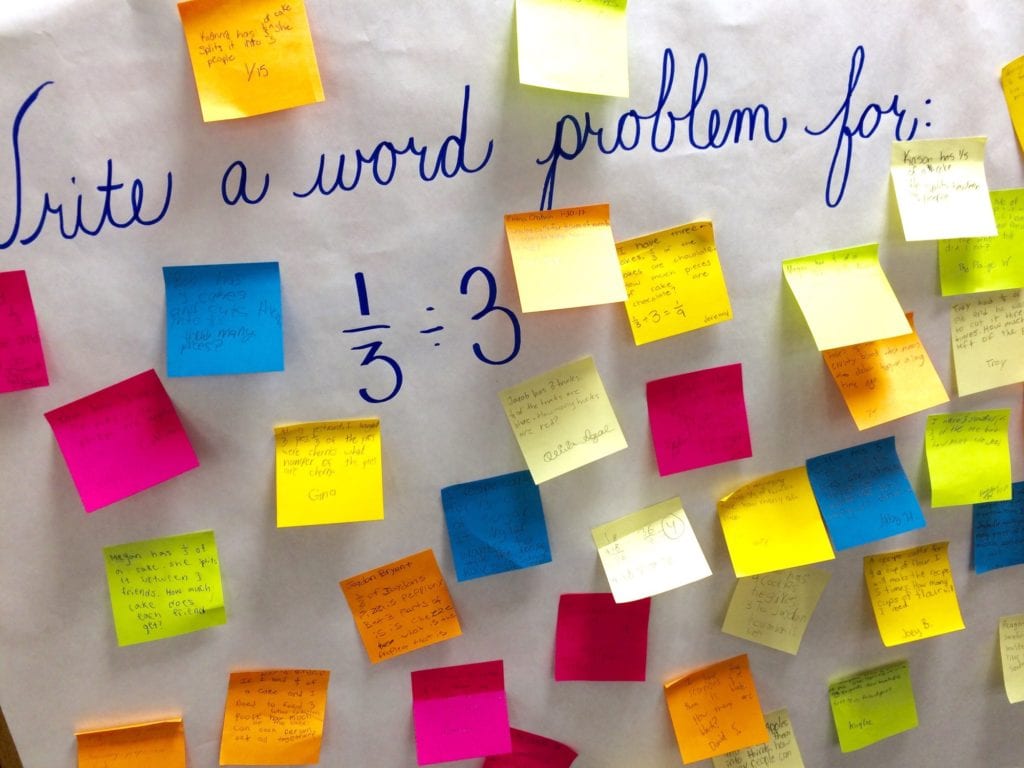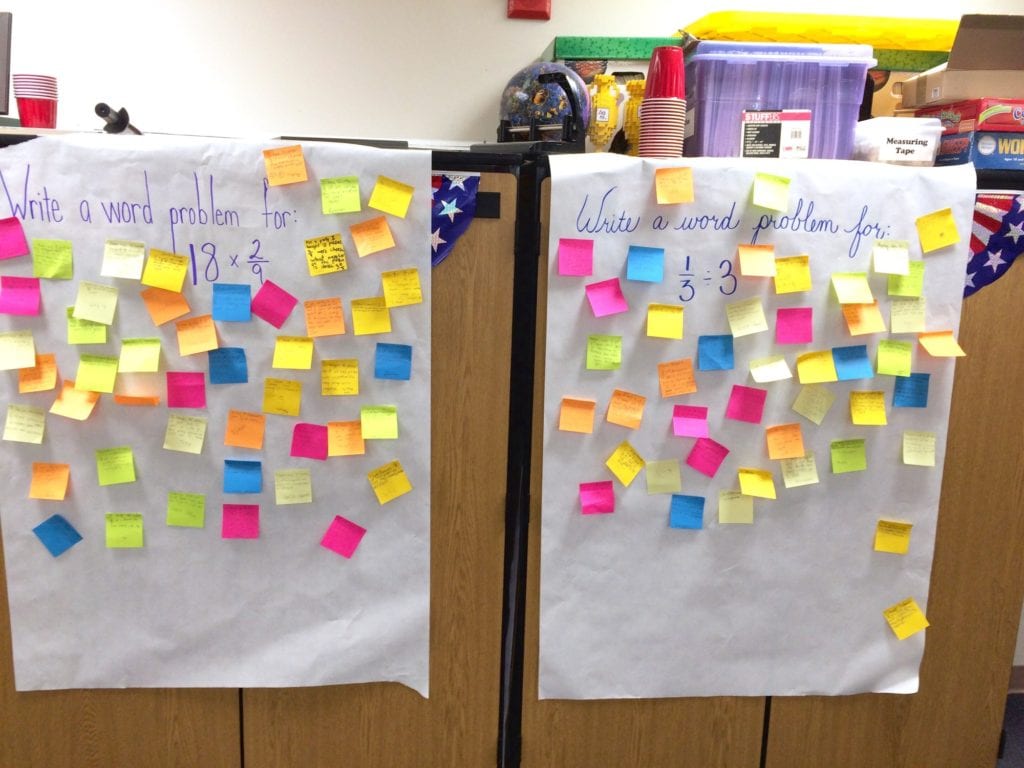
How many times have you realized that you need more strategies for teaching math without tech? You know it’s happened to you. You come in after a busy weekend to find that the copy machine is broken, and you don’t have the problem sets or worksheet ready for the day’s lesson. Next thing you know, you’re scrambling. Have no fear, there are many strategies for teaching math you can use to survive the day (or week) until things are up and running again. (And really, these are also a bunch of fun, engaging ways to mix up your math instruction even when the copier IS working!)
Math Poster Problems & Post-Its
This is one of my favorite math strategies in a pinch. Get sheets of butcher paper or large construction paper. Write a problem large enough at the top that it can be seen from across the room, and pass out post-it notes for your students to write on.

Students can either work from their seats and only get up to stick their post-it to the paper, or they can work all around the room, sitting by each poster as they solve the problems.

Task Cards
You can print one set of task cards and spread them around the room as a scavenger hunt (I explain how to do that in this post), play scoot, or just simply place several at each group of tables or workspace and instruct students to move around the room and solve them at their own pace. Printer broken too? You could project the task cards and solve them whole-group, or let students work in groups or pairs to solve the problems before moving on.
Create-a-Problem Day
My students always love create-a-problem day. Each student (or group of students) creates and solves a math problem using the skills and topic we have been working on. Students then move around the room and find a partner to solve their problem. Both students work on solving each others’ problems simultaneously. Any errors should be corrected and fixed by the students working together to find the mistake. After correct answers have been found, students move on to find new partners.
Math Strategy Presentations
This one works best in small groups (about 3 or 4 per group) and has two phases: preparation and presentation.
-
Preparation
I give each group of students a single problem on top of a poster. Each student in the group solves the problem independently. Next, the group comes together to compare answers. They need to find and fix any mistakes that were made. Then they add how they solved the problem on the poster. For fast-finishing groups, I challenge them to find more than one way the problem could be solved. Finally they prepare to share their problem with the class.
Here is what I wrote on the board last time we did this:

-
Presentation
Execution of this phase depends on time. If I need it to go quickly, each group has a minute to share their problem and how it was solved. If I am trying to stretch things out or need all of the students to practice all of the problems, when each group comes up to present, they get to “be the teacher.” The students in the class are presented with only the math problem and are challenged to solve it. The group waits just as we would until most students are finished. Groups then share how THEY solved the problem with the class.
Math Game Day
I don’t know about you, but I have a wardrobe full of ready-to-go math games from Teachers Pay Teachers. Sometimes, I surprise my students with math game day and pull out a bunch of games that review topics they have already learned during the year. The kids love it and there is very little prep involved besides a little organization and setup. Our favorite games are the many sets of dominoes I have in the store. I have some for reviewing volume, place value, fraction concepts, and fraction multiplication and division to name a few.


So, what strategies for teaching math without tech do YOU have? I’d love to hear your ideas in the comments!
Happy teaching!




